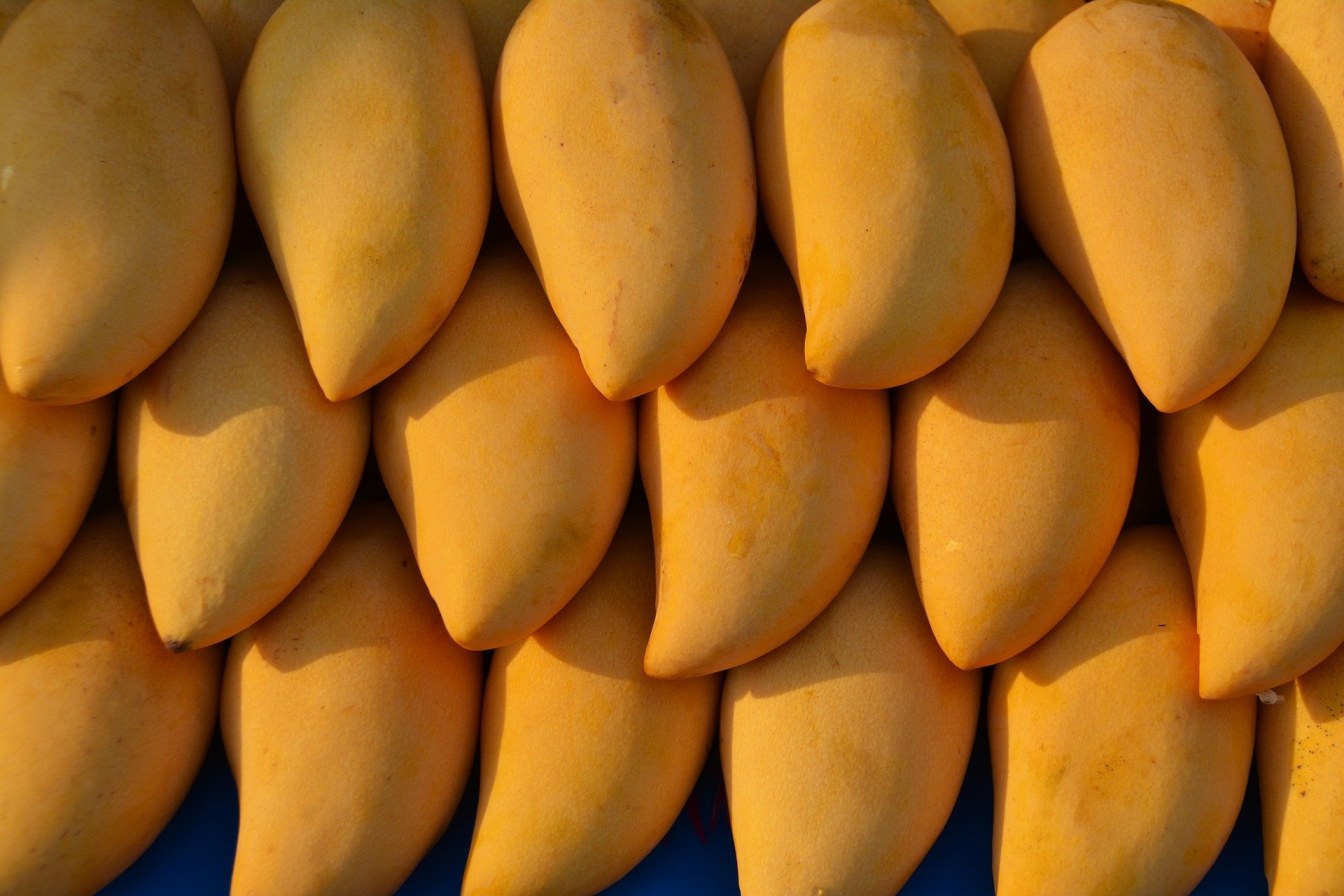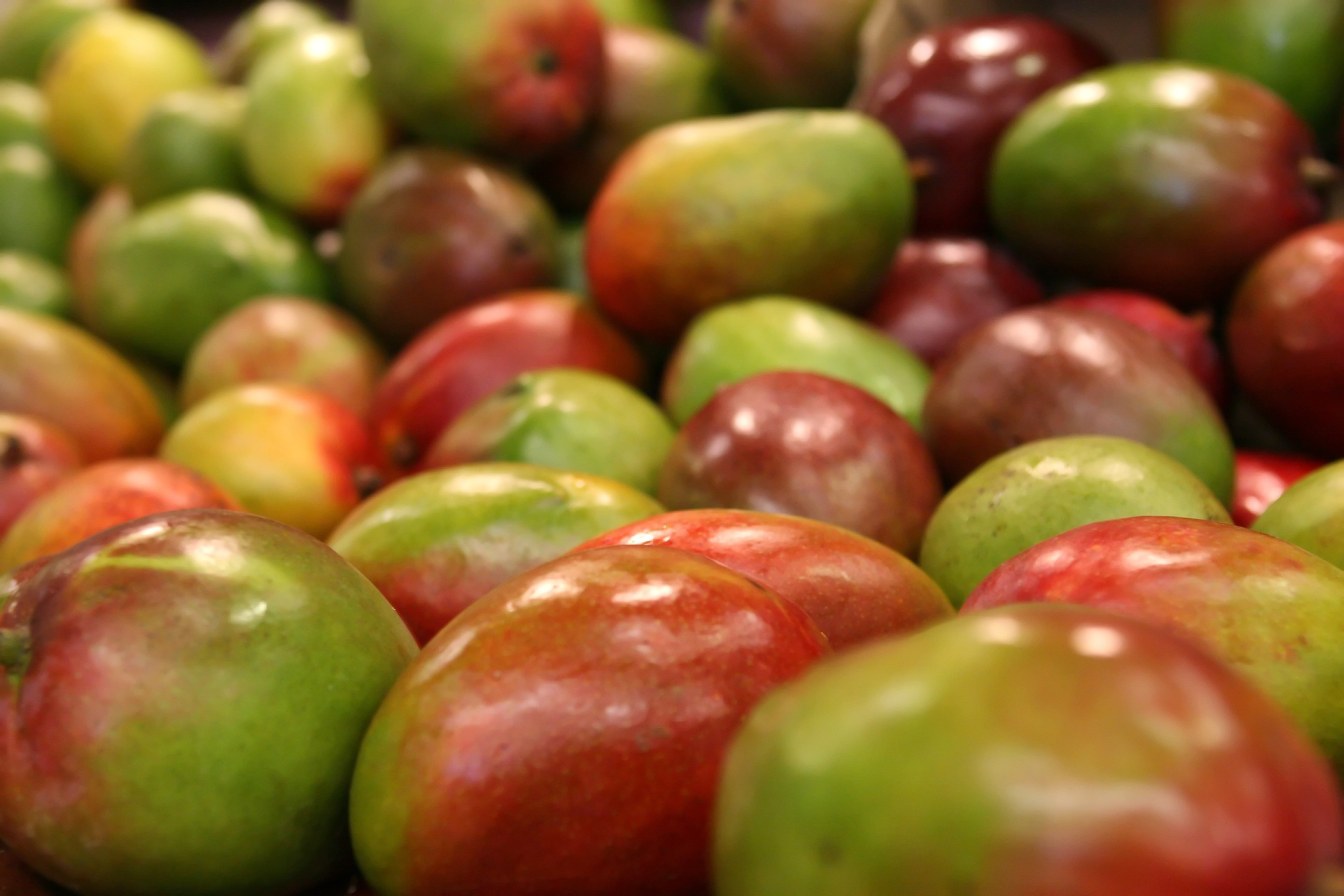New Trend In Mango Farming Helps Maha Farmer Reap Profits Worth Rs 6 Lakhs per Acre
While the process ultra high-density planting (UHDP) has been practised for years in Israel and South Africa, it is only recently being followed by a handful of enterprising farmers like 62-year-old Parmanand Gavane in Maharashtra.

“I’m fortunate to be a farmer,” begins Parmanand Gavane of Miraj in Maharashtra, a state with the highest incidences of suicides by farmers.
His village, Belanki which is 25 km from Miraj town, receives an output of 15 tonnes of mangoes from just two acres of land. Each acre holds 900 plants of the Kesar mango variety.
Gavane, 62, has adopted the ultra high-density planting (UHDP) system. Used for mango plantation across the globe, UHDP in synergy with other sustainable agricultural techniques can yield up to 200% more crop than the traditional methods of cultivation. Besides, it ensures a uniform shape and colour of the fruit while maintaining its flavour and freshness.
Last year, the fruits from Gavane’s farm, weighing between 250 g to 400g were picked up by buyers from Delhi, Hyderabad, Kolkata, Bengaluru and Raipur. From 3 tonnes in 2015, his maiden harvest, to 7.5 tonnes per acre in 2020 — Gavane believes that with proper management of the orchards he can achieve 10 tonnes of mangoes per acre.
Gavane, who is a former grape grower, saw a farmer in Lingnur village using the high-density plantation method, though he wasn’t very forthcoming to share his learnings. Gavane says, “I realised then that I was on my own and decided if I ever became successful, I would keep my orchard open to all and share my experiences, too.”
Each month he welcomes close to 50 farmers to his farm. Last year he had 2,000 footfalls, despite the pandemic. In the months of May and June, when the trees are heavy with fruits, the number of visitors peak.
Gavane’s is a rare case because most UHDP systems in India do not go beyond 700 trees, compared to the traditional technique of 40 trees per acre.

“The hot and dry weather and coarse shallow type of soil of Miraj makes it a suitable place for practicing UHDP. Preferred mango variety to grow using this method is Kesar. Other varieties like Amrapali, Mallika, Sindhu and others too can also be grown. However, one needs to prune the tree twice a year to maintain a proper canopy,” says Dr B R Salvi, Assistant Dean, College of Horticulture, Dr Balasaheb Sawant Konkan Krishi Vidyapeeth, Ratnagiri.
The trees in this plantation method are not allowed to grow beyond 7 feet by the process of regular pruning. This leads to mango orchards attaining their full potential in 3 to 4 years as compared to the 7 to 8 years taken by traditional methods of cultivation.
Not so ‘Aam’
The process of UHDP has been practised for years in Israel and South Africa and is now being followed by a handful of enterprising farmers here. According to Gavane, this method improves per acre productivity while reducing the usage of water for irrigation up to 50 per cent.
The mangoes trees are planted in neat rows with the drip pipes snaking all around. “I administer a mix of 70 per cent organic and 30 per cent chemical fertilisers, including the use of a fungicide which inhibits growth but hastens flowering,” he says, adding, “In this method, fertiliser intake is very high.”
Gavane spends close to Rs 100,000 per acre which includes fertiliser and labour costs and ends up with a profit of Rs 600,000 per acre.

Last year, he planted trees in two more acres. Of the regular visitors to Gavane’s farm is one Vishal Paramne (32), till recently was assistant professor of Kolhapur-based Dr J J Magdum College of Engineering and presently works as design engineer with Tessolve Semiconductor Private Limited. Inspired by the UHDP system, Paramne, who has four acres of land in Vellanki village, plans to start a mango orchard soon. He says, “Gavane sir’s mango orchard is a rarity in our neighbourhood for he has four acres with 3,600 fruit bearing mango trees. Most farmers grow only grapes here.”
This system warrants the adoption of certain important technologies like formative pruning in the initial years, proper canopy management annually to encourage vegetative growth immediately after the harvest, stopping of the vegetative growth during September to favour fruit bud initiation and differentiation.
Adoption of the drip irrigation system in order to replenish the loss of moisture and provide nutrients with required quantity at appropriate doses through fertigation technique is highly essential to reap a higher yield with quality fruits. According to Gavane several farmers in Maharashtra, Andhra Pradesh and Karnataka are following his pattern and UHDP is spread over 200 acres.

Besides Kesar he has several of the Rumania variety which bear fruit twice a year and are from North Andhra Pradesh. The fruits of Benishan and Tommy Atkins (from Florida, USA), the purple beauty, which a friend gifted are table varieties used for pickling and home consumption.
Super UHDP
Assisted by his sons, Shivanand, a Civil Engineer who quit his job in a Kirloskarwadi-based firm, and Madhavanand, an Arts graduate, Gavane continues to grow the Sonaka and SS varieties of grapes on nine acres and also runs a plant nursery. “I sell around 40,000 saplings of Kesar every year,” he informs.
Experts believe that mango cultivation can be revolutionised by the adoption of UHDP. It can be grown in a wide range of soils except for clayey or extremely sandy or rocky calcareous, alkaline or waterlogged soils. Gavane has planted at a spacing of 12 ft by 4 ft, accommodating 900 plants in an acre unlike the 674 plants per acre.
This makes his plantation a ‘super UHDP’, of sorts.

The critical components of UHDP technology are the management of inputs: irrigation and fertiliser and besides the canopy management. These two inputs are provided through drip irrigation systems. According to experts, it can be followed in Andhra Pradesh for varieties like
Alphonso, Alampur, Baneshan and Totapuri; in Bihar for Bombai, Himsagar, Langra and Chausa; in Goa for Mankaurad, in Gujarat for Alphonso and Kesar; in Karnataka for Alphonso, Bangalora, Neelum and Mallika, in Tamil Nadu for Alphonso, Banganapalli and Neelum; in Uttar Pradesh for Bombay Green, Dashehari and Langra; and in Maharashtra for Alphonso, Kesar and Ratna.
Pruning is a very essential and critical operation of UHDP to maintain fruiting shoots and to contain its canopy. It must be done as soon as after harvest preferably before 15 June in central and south India. Gavane explains, “About a month after pruning, thinning of the newly emerged shoots is essential in order to avoid excess ones and overcrowding.”
Dwelling on the benefits of super UHDP, Gavane says it increases productivity up to 2-3 times, reduces water used for irrigation up to 50 per cent and increases fertiliser intake by plants.
(Edited by Yoshita Rao)
If you found our stories insightful, informative, or even just enjoyable, we invite you to consider making a voluntary payment to support the work we do at The Better India. Your contribution helps us continue producing quality content that educates, inspires, and drives positive change.
Choose one of the payment options below for your contribution-
By paying for the stories you value, you directly contribute to sustaining our efforts focused on making a difference in the world. Together, let’s ensure that impactful stories continue to be told and shared, enriching lives and communities alike.
Thank you for your support. Here are some frequently asked questions you might find helpful to know why you are contributing?


This story made me
-
97
-
121
-
89
-
167













